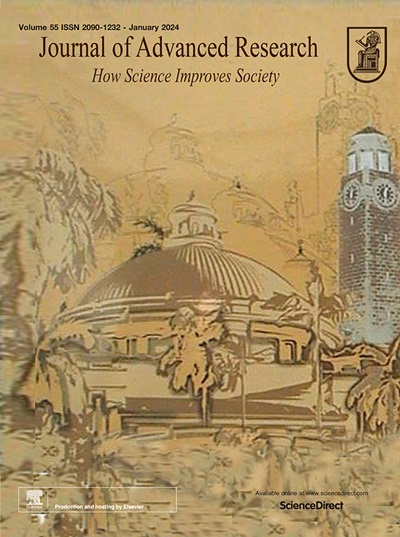一种可注射的纳米羟基磷灰石水凝胶与三七皂苷R1的缓释通过Notch1/Akt信号通路促进血管生成,从而促进骨再生
IF 13
1区 综合性期刊
Q1 MULTIDISCIPLINARY SCIENCES
引用次数: 0
摘要
notoginsenoside R1 (NGR1)是一种生物活性化合物,具有显著的促血管生成潜力,是治疗多种疾病的有希望的候选药物。由于血管生成和成骨是协同耦合的过程,NGR1刺激血管形成的能力可能对骨再生起到关键的促进作用。然而,NGR1促进骨修复中血管生成的潜在分子机制仍有待充分阐明。目的探讨NGR1促进血管生成的可能机制,验证装载NGR1的生物材料对骨缺损再生的治疗效果。方法将人脐静脉内皮细胞(HUVECs)培养于含有筛选的NGR1浓度的完全培养液中,研究其体外促血管生成表型和可能的机制。随后,合成了一种可注射的纳米羟基磷灰石凝胶,作为NGR1的活性药物递送系统。在大鼠颅骨骨缺损模型中,进一步评价了ngr1负载生物材料对骨缺损再生的治疗作用。免疫组化分析相关信号通路的关键分子。结果体外实验表明,NGR1具有良好的生物相容性和血管生成能力,可促进细胞增殖,增强细胞迁移,上调血管生成相关基因表达,提高VEGF和VEGFR-2蛋白表达。此外,与仅水凝胶组相比,可注射的纳米羟基磷灰石掺入的GelMA水凝胶加载NGR1显著增强了大鼠颅骨骨缺损模型的骨缺损再生。此外,NGR1的补充显著上调了骨形成过程中CD31的表达,表明其在血管生成和成骨过程中的耦合作用。在机制上,体内和体外实验均表明NGR1可能通过激活Notch1/Akt单链通路促进骨再生过程中的血管生成。结论NGR1在骨再生过程中通过激活Notch1/Akt信号通路促进血管生成,可能为骨相关疾病的治疗提供潜在靶点。此外,装载ngr1的生物材料的应用可能是增强骨再生的一种有前途的策略。本文章由计算机程序翻译,如有差异,请以英文原文为准。

An injectable nano-hydroxyapatite-incorporated hydrogel with sustained release of Notoginsenoside R1 enhances bone regeneration by promoting angiogenesis through Notch1/Akt signaling
Introduction
Notoginsenoside R1 (NGR1), a bioactive compound, exhibits significant pro-angiogenic potential, making it a promising candidate for treating various diseases. Since angiogenesis and osteogenesis are synergistically coupled processes, NGR1′s capacity to stimulate blood vessel formation may critically promote bone regeneration. However, the underlying molecular mechanisms through which NGR1 promotes angiogenesis in bone repair remain to be fully elucidated.Objectives
To investigate the potential mechanism by which NGR1 promotes angiogenesis and to validate the therapeutic effect of NGR1-loaded biomaterials on bone defect regeneration.Methods
Human umbilical vein endothelial cells (HUVECs) were cultured in complete medium containing the screened concentration of NGR1 to investigate its pro-angiogenic phenotype and potential mechanism in vitro. Subsequently, an injectable nano-hydroxyapatite-incorporated GelMA hydrogel was synthesized as an active drug-delivery delivery system for NGR1. The therapeutic effect of this fabricated NGR1-loaded biomaterial on bone defect regeneration was further evaluated in a rat cranial bone defect model. The key molecules in relevant signaling pathways was analyzed by immunohistochemistry.Results
In vitro experiments demonstrated that NGR1 exhibits good biocompatibility and angiogenic capacity, as it promoted cell proliferation, enhanced cell migration, upregulated the angiogenic-related gene expression, and increased the protein expression of VEGF and VEGFR-2. Furthermore, the implantation of the injectable nano-hydroxyapatite-incorporated GelMA hydrogel loaded with NGR1 significantly enhanced bone defect regeneration in a rat cranial bone defect model compared to hydrogel-only group. Additionally, NGR1 supplementation markedly upregulated CD31 expression during bone formation, suggesting its role in coupling of angiogenesis and osteogenesis. Mechanistically, both in vivo and in vitro experiments indicated that NGR1 likely promote angiogenesis via activating Notch1/Akt singling pathway during bone regeneration.Conclusions
These findings indicate that NGR1 promotes angiogenesis through Notch1/Akt signaling activation during bone regeneration, which might offer potential therapeutic targets for bone-related diseases. Moreover, the application of NGR1-loaded biomaterials could represent a promising strategy to enhance bone regeneration.求助全文
通过发布文献求助,成功后即可免费获取论文全文。
去求助
来源期刊

Journal of Advanced Research
Multidisciplinary-Multidisciplinary
CiteScore
21.60
自引率
0.90%
发文量
280
审稿时长
12 weeks
期刊介绍:
Journal of Advanced Research (J. Adv. Res.) is an applied/natural sciences, peer-reviewed journal that focuses on interdisciplinary research. The journal aims to contribute to applied research and knowledge worldwide through the publication of original and high-quality research articles in the fields of Medicine, Pharmaceutical Sciences, Dentistry, Physical Therapy, Veterinary Medicine, and Basic and Biological Sciences.
The following abstracting and indexing services cover the Journal of Advanced Research: PubMed/Medline, Essential Science Indicators, Web of Science, Scopus, PubMed Central, PubMed, Science Citation Index Expanded, Directory of Open Access Journals (DOAJ), and INSPEC.
 求助内容:
求助内容: 应助结果提醒方式:
应助结果提醒方式:


